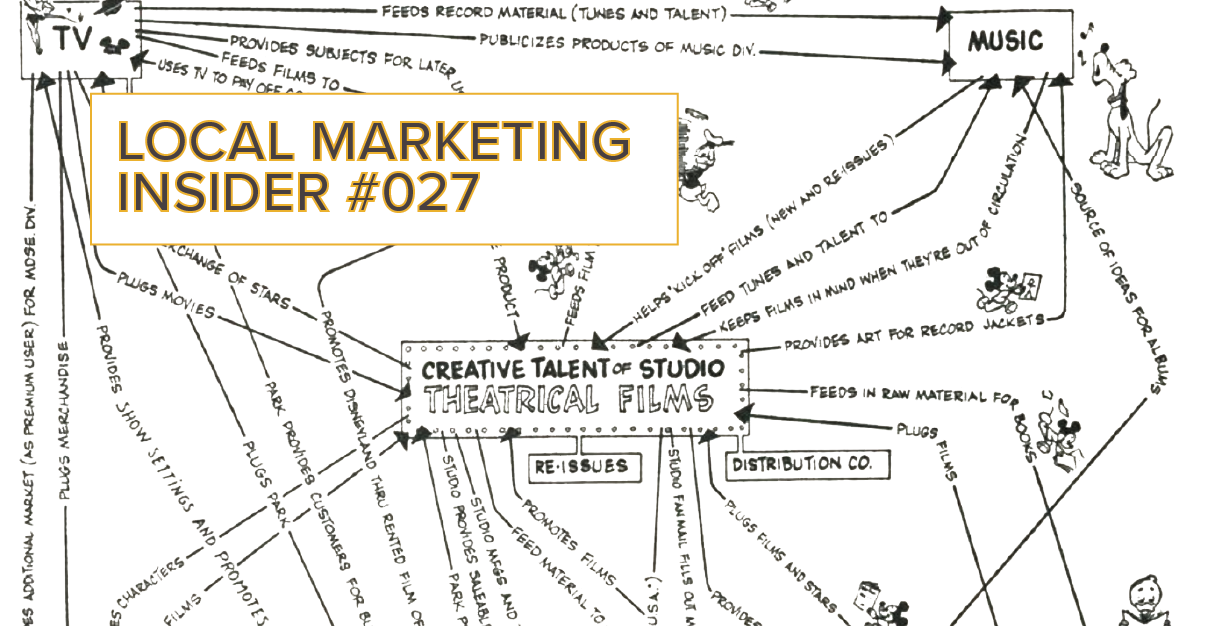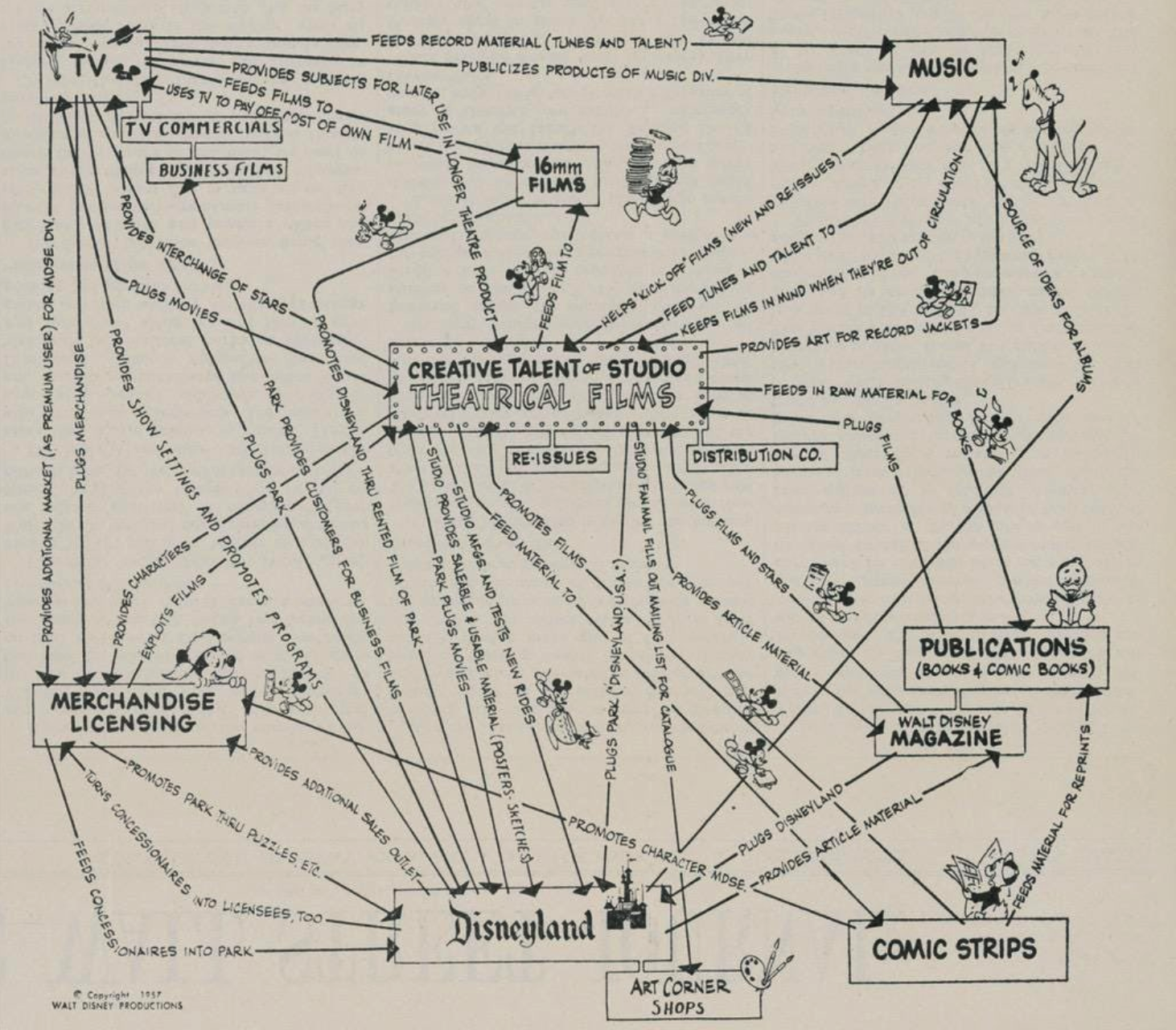Change how you look at your marketing ecosystem to uncover missed opportunities. With a marketing synergy map you can visualize all of your cross-channel marketing connections, better understanding how one project impacts the next.

Today’s article is about 1+1=11. Compounding effects.
How each piece of your marketing should work together to become more valuable as a group than alone.
Is marketing project A feeding marketing project B?
Any marketing asset is good when it does as designed, but it becomes great when it’s a growth mechanism for other marketing initiatives.
I see this all the time with podcasts.
A long-form interview creates content for the audio podcast. This is the “does as designed.”
But it also creates:
And on and on. The more connections you can make, the better.
In a lot of ways, this is how modern marketing works. When you see a CEO active on social and your first thought is “is all this posting worth it?” Likely this is only one small piece of the puzzle.
You can visualize this strategy with a synergy map - a great tool to help understand how each marketing initiative helps power other marketing initiatives.
These four examples stood out, starting with Walt Disney.
Disney’s Synergy Map from 1957
The content in the photo is small so I’ve pulled out a few example connections:

What I find particularly insightful about this early vision of Disney is the central role played by creative talent.
In the 1940s Walt Disney Studios was struggling financially, unable to produce the financial returns needed to support the high production costs of now classics like “Bambi”, “Fantasia”, and “Cinderella."
Understanding the power held within the creative department, rather than trying to make production more efficient, Disney instead monetized the company using new distribution channels, like Disneyland and merchandise sales.
To illustrate this point another way we can look to what is known in Disney history as the “Lost Decade”, roughly 1994-2004. Disney’s 3rd CEO, Michael Eisner, in an effort to boost shareholder value, significantly cut resources to creative departments. Not only did this produce a series of unmemorable movies, but it also cut off monetizable material for other departments.
It took a new CEO and 5+ years of new investment in creative to get Disney back on track.
This goes to show that while investment-heavy creative production struggled to be successful on its own, with an interconnected network of marketing channels supporting each other, Disney built a marketing powerhouse.
Content Marketing Institute - Modern internet media company
You may have heard the notion lately “every company is now a media company.” While as local marketers the playbook is a little different than that of SaaS or Ecomm (where this advice is usually directed), I think it's a smart idea to pull inspiration from those sectors.
Content Marketing Institute is a literal media company, so understanding how it markets could be a model adapted to your own micro media company within your local business.
Examples:
David Perell - the one-person media company
David has a much smaller operation, I’m guessing just him, selling online writing courses. Where Disney is a massive and less relatable example, David’s model is a bit easier to digest.
Example:
Nik Sharma - Personal synergy maps
Nik is a compelling modern-day example of how someone’s personal content can feed their brand's opportunities and vice versa. While this map is more simplistic due to the groupings, it's notable that personal and professional marketing can work together to drive career growth opportunities.
Example:
A couple of days late, but Happy Valentines Day from all of us here at Widewail.
If/when I do a marketing synergy map for Widewail, here would be an example of how our blog, newsletter, and academy work together:
Blog > promotes newsletter > newsletter promotes academy > Academy promotes GMB audits
If you built a marketing synergy map for your business what would it look like? What connection opportunities are you missing? A visual may help you find the gaps.
h/t to George Mack for introducing me to synergy maps. His Twitter feed is world-class for marketers - highly recommend.
Also, I’ll admit I had to look up “h/t” last week. It’s Twitter-speak for “tip of the hat”, i.e. give credit. The more you know.
See you in 2 weeks - Jake, Marketing @Widewail
I’m the Director of Marketing here at Widewail, as well as a husband and new dad outside the office. I'm in Vermont by way of Boston, where I grew the CarGurus YouTube channel from 0 to 100k subscribers. I love the outdoors and hate to be hot, so I’m doing just fine in the arctic Vermont we call home. Fun fact: I met my wife on the shuttle bus at Baltimore airport. Thanks for reading Widewail’s content!
Bite-sized, to-the-point, trend-driven local marketing stories and tactics.
U3GM Blog Post Comments